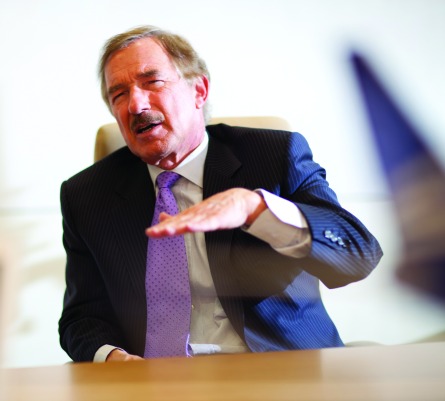Success as an operating lessor in a volatile, post-crash global market means having access to attractively priced funds, as a scarred and slow-to-reform financial system has caused the price of money to skyrocket.
Unlike his competitors, chairman and chief executive Steven Udvar-Hazy of start-up lessor Air Lease claims he still has his hands on nicely priced funds, which should translate into more attractive deals for the airlines and, ultimately, solid demand for his company's leasing business.
"Our cost of financing is cheaper than any other lessor, it is less than 3%," he says, from Air Lease's temporary Los Angeles office.
FUNDING KNOWLEDGE
When it comes to funding - and aircraft trading generally - nobody knows the business better than Hazy, who co-founded International Lease Finance in 1973 before selling it to insurance giant AIG and carrying on at the helm, building a 900-plus aircraft business that, alongside the other mega-lessor, GECAS, stands head and shoulders above all lessors in terms of fleet size.
AIG ran into trouble in the 2008-9 financial crisis and was effectively nationalised in the US Treasury's bid to prevent a financial system collapse that it feared would result if the insurer failed.
 |
|---|
© Tracy MorrisUdvar-Hazy: must "work harder" |
Hazy retired from ILFC earlier this year and then founded Air Lease. His mastery of the aircraft business is in no doubt - born in 1946, he fled Communist Hungary in 1958 and went on to donate the $60 million that created the Steven F Udvar-Hazy Center in Virginia, housing much of the Smithsonian Institution's aircraft collection. But the question industry watchers are asking now is, can he work his magic again at a new company in a markedly different financial environment?
Critics of Air Lease are quick to point out that, at ILFC, Hazy had access to much cheaper money than his smaller rivals. AIG and ILFC had a symbiotic relationship in which the lessor enjoyed favourable debt ratings due to its parent's AAA rating, while the insurer was able to benefit from lessor's significant tax benefits driven by accelerated depreciation of aircraft.
But Hazy stresses it is important to know the facts behind ILFC's financing. "I think there is a myth that AIG somehow guaranteed the obligations of ILFC, but ILFC was independent. ILFC raised its own financing," he says.
As AIG's fortunes plummeted in 2008, so did its debt ratings. So did ILFC's, on the rating agencies' principle that no subsidiary should be rated higher than the parent.
Indeed, says Hazy, "look at ILFC's recent bond deals, and recent financings by [rival lessors] AWAS and Aviation Capital Group - the era of really cheap money is no longer with us. I believe our financing costs will be very competitive."
To be successful in this new environment, Hazy acknowledges he must change the way he approaches the business.
"This company will have a lower overhead operation, a more cost-efficient operation than ILFC; we won't have as extravagant offices. I think this will offset some of what you might consider a small premium that we have to pay for financing."
He also confesses that at Air Lease he must "work much harder", as the lessor is a small team, "so we are all wearing many hats". Currently, it has 29 employees and looks to add "as few as we need". The goal is to have six aircraft for every member of staff.
Air Lease is buying aircraft directly from the manufacturers, from seven different leasing companies (but not ILFC); and in sale-leaseback deals with airlines.
Hazy describes the early days at Air Lease as fast-paced but "a lot of fun. It almost reminds me of the days of ILFC before we merged with AIG in the 1990s; that's the sort of the spirit around here."
He still flies a business jet, just like his days at ILFC. "I bought a Gulfstream IV and ordered a new Gulfstream 650 a couple years ago, which will deliver in 2012.
"The Gulfstream is a workhorse. A lot of people in Washington think it is a luxury, but last week I visited 20 different airlines in six countries. If I try and do that commercially, I would be on a three-week tour. I look at the corporate jet not as a luxury but as a mobile office."
Source: Flight International























